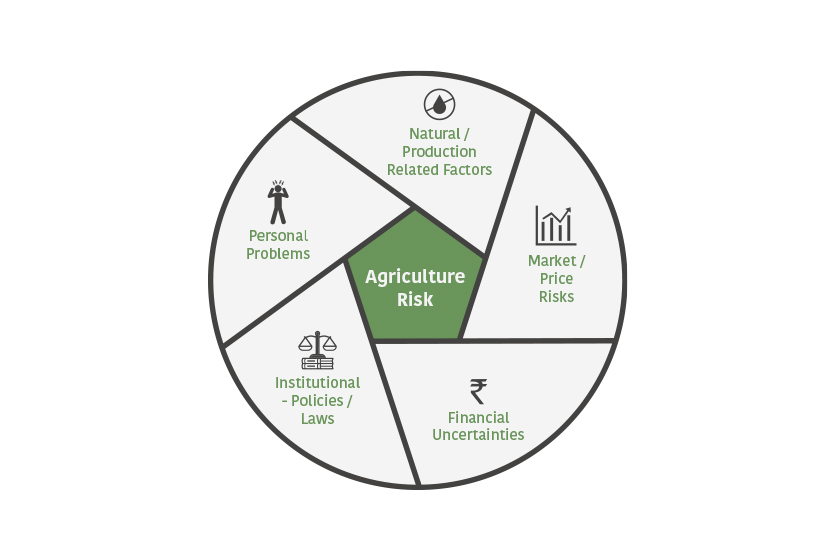Image Source: Google
Running a farm comes with a unique set of challenges and uncertainties. From unpredictable weather patterns to fluctuating market prices, farmers are constantly faced with risks that can impact their business operations. In order to thrive in this ever-changing environment, it is essential for farmers to implement effective risk management strategies.
By proactively identifying and addressing potential risks, farmers can protect their livelihood and increase their chances of success. In this article, we will discuss some essential farm risk management strategies that can help farmers navigate uncertainty and achieve their goals.
Understanding Farm Risks
Types of Farm Risks
- Financial Risks: This includes risks related to market volatility, input costs, and access to credit.
- Production Risks: Risks related to weather conditions, pest infestations, and diseases that can impact crop yield and quality.
- Legal and Regulatory Risks: Risks related to compliance with laws and regulations, as well as potential lawsuits.
- Human Resource Risks: Risks related to labor availability, training, and retention.
Assessing Farm Risks
Before implementing risk management strategies, it is important for farmers to assess the specific risks that their farm is exposed to. This can be done by conducting a thorough risk assessment, which involves identifying potential risks, evaluating their likelihood and impact, and prioritizing them based on severity. By understanding the risks that their farm faces, farmers can develop targeted strategies to mitigate them effectively.
Implementing Risk Management Strategies
Diversification
Diversification is a key strategy for managing farm risks. By diversifying their crops or livestock, farmers can spread out their risk and reduce the impact of potential losses. Diversification can also include exploring alternative revenue streams, such as agritourism or value-added products, to supplement traditional income sources.
Insurance
Insurance is another important tool for managing farm risks. Farmers can purchase insurance policies to protect against losses due to weather events, crop failure, or other unforeseen circumstances. It is important for farmers to carefully evaluate their insurance needs and select policies that provide adequate coverage for their specific risks.
Risk Hedging
Risk hedging involves using financial instruments, such as futures contracts or options, to protect against price fluctuations in the market. Farmers can use hedging strategies to lock in prices for their crops or livestock, reducing the risk of financial losses due to market volatility.
Emergency Preparedness
Emergencies can strike at any time, and being prepared is essential for minimizing their impact on farm operations. Farmers should develop emergency response plans that outline procedures for dealing with natural disasters, accidents, or other unexpected events. It is also important to have adequate insurance coverage and access to emergency resources, such as backup power generators or water supplies.
Monitoring and Reviewing
Regular Monitoring
Risk management is an ongoing process that requires constant monitoring and evaluation. Farmers should regularly review their risk management strategies to ensure that they are effective and adjust them as needed. By staying vigilant and proactive, farmers can stay ahead of potential risks and minimize their impact on their operations.
Seeking Expert Advice
In some cases, farmers may benefit from seeking advice from risk management experts or agricultural consultants. These professionals can provide valuable insights and expertise to help farmers identify, assess, and manage risks effectively. By leveraging external expertise, farmers can gain a competitive edge and better navigate uncertainty in the agricultural industry.
Learning from Experience
Experience is a valuable teacher, and farmers can learn a lot from their past experiences with risks and uncertainties. By reflecting on past challenges and successes, farmers can identify patterns and trends that can inform future risk management strategies. By continuously learning and adapting, farmers can improve their resilience and preparedness for future uncertainties.
Conclusion
Managing risks is an essential aspect of running a successful farm. By understanding the types of risks their farm faces, implementing targeted risk management strategies, and continually monitoring and reviewing their approach, farmers can navigate uncertainty with confidence and achieve long-term success. By diversifying their operations, leveraging insurance and risk hedging tools, and developing emergency preparedness plans, farmers can protect their livelihood and thrive in a challenging agricultural environment. With the right risk management strategies in place, farmers can position themselves for sustainable growth and profitability in the face of uncertainty.
